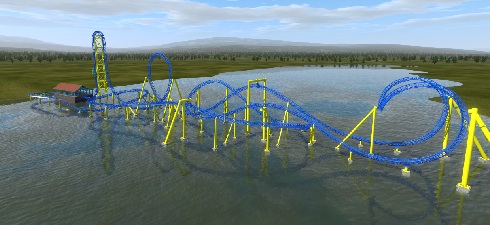Exploring Various Types of Roller Coasters and Their Unique Features
Roller coasters are one of the most exhilarating attractions found in amusement parks around the world. They come in various types, each offering a unique experience that caters to different thrill-seeking preferences. Understanding the different types of roller coasters can enhance your appreciation of this engineering marvel and help you choose the right ride for your adventurous spirit.
One of the most common types is the Wooden Roller Coaster. These coasters are crafted from laminated wood and are known for their classic charm and rustic appeal. They typically feature a series of steep drops, sharp turns, and airtime hills that create a thrilling, albeit sometimes rough, ride. The sound of creaking wood adds to the nostalgic experience, making them a favorite among roller coaster enthusiasts.
Next, we have the Steel Roller Coaster. Steel coasters are known for their smooth ride and are capable of executing more complex maneuvers thanks to the strength of their construction. These rides often feature loops, corkscrews, and inversions, appealing to those looking for high-speed thrills. Steel coasters can achieve greater heights and speeds than their wooden counterparts, making them a staple in modern amusement parks.
Another exciting type is the Inverted Roller Coaster. In these rides, passengers are seated beneath the track, allowing for a unique experience where riders can see the ground rushing by as they flip and twist. The sensation of flying is amplified, as there are no tracks above the riders' heads, providing an exhilarating sense of freedom.
roller coaster types

For those who prefer a more futuristic experience, the Launch Coaster is an excellent option. Instead of the traditional lift hill, these coasters use a launch mechanism to propel riders forward at incredible speeds. This sudden acceleration is often a defining feature of the ride, offering a thrilling sensation that keeps riders coming back for more.
Lastly, we have the Flying Coaster, where seats are mounted to give riders the sensation of flying. Riders are positioned face down, simulating the experience of soaring through the air like a bird. This innovative design allows for unique drops and turns that add to the sensation of weightlessness.
In conclusion, roller coaster types vary greatly, from the classic wooden models to the thrilling launches and immersive experiences of flying coasters. Each type offers a distinct thrill, making roller coasters an enduring favorite among amusement park aficionados. Whether you’re an adrenaline junkie or a casual rider, there’s a roller coaster out there that’s perfect for you. So the next time you visit a theme park, take the time to explore these various types and find your ultimate thrill ride.
-
Top Amusement Equipment Manufacturer Rock n Roller Coaster & Carousel ManufacturerJun.10,2025
-
World's Scariest Roller Coaster Experience Ultimate Thrill & HeightJun.10,2025
-
Ultimate Thrill Ride Roller Coaster High-Speed, Safe AdventureMay.30,2025
-
Carousel Mansfield Rides Premium Indoor & Event SolutionsMay.30,2025
-
T3 Roller Coaster High-Thrill, Safe Ride for Theme Parks & ResortsMay.30,2025
-
Roller Coaster Cart Design Custom-Built & High-Safety Thrill Ride VehiclesMay.30,2025
